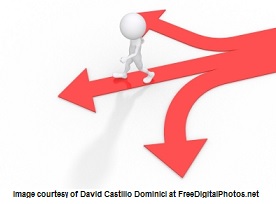What teacher candidates won’t find in their textbooks
Over the holidays, I ran into an old colleague from back when I
was doing a lot of work in Baltimore during the 1990s. The conversation turned
to NCTQ’s work in teacher preparation. Perhaps half kidding, he accused me of
being a turncoat, referring to my newfound commitment to traditional teacher
preparation. “Whatever happened to you?” he launched in. “You
used to know that teacher prep was a total waste of time. Now you’re such a
booster!”
“Twenty-five years ago, that position may have made some
sense,” I retorted. “It’s just not a defensible position any
longer.”
What this guy didn’t realize—nor perhaps do a lot of people—is
that over the last couple of decades there’s been a boon in all sorts of
knowledge, much of it highly relevant to teaching. Unfortunately, little of
this knowledge has been integrated into teacher preparation. If it were,
we might see a big reduction in the all-too-steep learning curve experienced by
most novice teachers.
For starters, there’s the rock-solid science on how to teach
reading, which didn’t just end with the National Reading Panel in 2000, but has
continued to grow, particularly including the roles of oral language and
building broad content knowledge. There have also been advancements in basic
principles of instruction and managing human (e.g. classroom) behavior.
In a report NCTQ released yesterday, we again find
little evidence of these advancements making their way into mainstream teacher
education, specifically by means of the textbooks programs require for
coursework. This time, the field of study is human learning, our collective
knowledge of which, resting on a foundation laid over a century ago, has gone
into warp speed over the last few decades. And, we would contend, there is no
other subject that could benefit struggling new teachers more.
To determine the presence of this beneficial knowledge in
teacher prep programs, we analyzed the textbooks required in courses purporting
to teach how children learn (generally ed psych and methods courses), assessing
if any home in on the research-proven strategies that teachers can use to
help children learn as well as retain what they learn. Those very practical
strategies, some of which are supported by research going back decades, were neatly packaged and tied with a bow for an
audience of educators in 2007 by the Institute for Education Sciences, the
research arm of the U.S. Department of Education.
In an exhaustive analysis, our experts were not able to
identify a single textbook in our representative sample of 48 textbooks which
would be suitable for teaching this essential group of strategies. The majority
of texts adequately cover only a single strategy. None in the sample covers
more than two.
We wondered then if perhaps
programs worked around the deficiencies found in textbooks, supplementing them
with other resources. Looking for references to supplemental readings (hoping
one might be the IES guide itself), lecture topics and student assignments, we
found nothing. Further, since publishers generally only publish texts which are
likely to meet consumer demand, it seems unlikely that teacher educators are
clamoring for content they’re not getting. And the fact that the newly formed
Deans for Impact made the “science of learning” its opening salvo also suggests that this material
has yet to be embraced by mainstream teacher ed.
One explanation for the absence of these strategies from
textbooks and coursework is that the field of teacher education is more likely
to ignore research, not just because it sometimes comes from other fields, but
because it counters the prevailing views of teacher educators. That hypothesis
might explain why one of the six strategies (the one which also happens to be
backed up by the most science) receives such short shrift. That would be the “testing” strategy which
advises frequent quizzing to help students remember what they learn. Testing
is a dirty word these days. But it doesn’t explain the indifference on the part
of teacher education to the other strategies, such as teaching about the
importance of teachers distributing review or practice of new material across
weeks to promote retention of new material.
Another hypothesis might point to teacher education’s
unwillingness to put down its collective foot once and for all, rejecting much
of the current “research” which would more aptly be termed thought-pieces, non
generalizable case studies or small-sample investigation. That kind of culling,
by our estimation, would reduce the average ed psych textbook’s 2,200
references by about 90 percent—with most of the reduction due to the common
practice in these textbooks of citing a whole book as the supporting evidence
for this or that practice without even identifying the page number (imagine a
medical textbook accepting as adequate support a citation such as “Your Spine and You, 2000, Chicago:
Doubleday”).
The market for substandard textbooks has got to dry up. There
is simply no defense for using textbooks so untethered from the emerging
research about what works in practice. We look forward to working with
publishers and prep programs to ensure these books are pulled from the shelves.
See NCTQ’s latest report, Learning About Learning,
for a closer look at the research-proven instructional strategies teacher
textbooks leave out.



